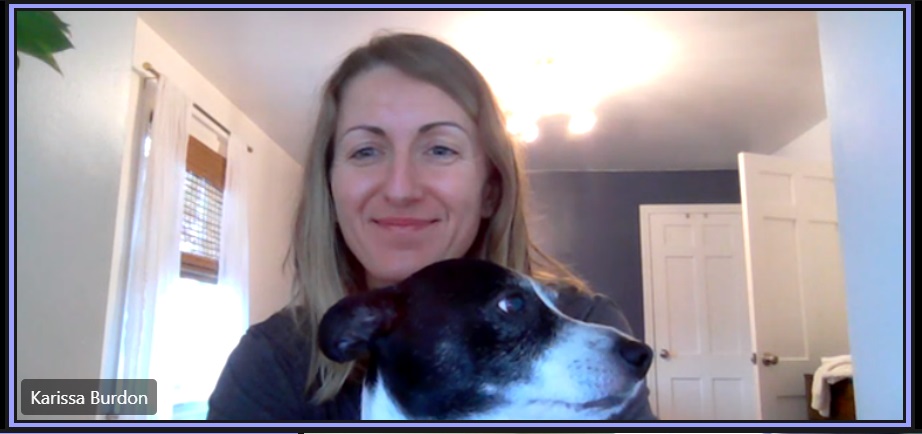How the Surge in Pet Ownership is Driving Opportunities in CPG Retail 6/4/2021

Earlier this year I finally decided that I wanted a pet. With my reduction of travel, I figured it would be cool to have some company at home. While I prefer dogs, they are a little high maintenance, so I decided on something specific: a pair of mellow, sibling kittens, who would have each other to play with and theoretically stay out of my hair when I was on remote meetings (theoretically). So, I asked my nephew, who works at an animal hospital, to keep an eye out for such a pair.
And waited. And waited.
Turns out I was too late to the game. During the pandemic we saw a record surge in pet adoptions as locked-down consumers sought out additional companionship for their mental well-being, as well as that of their families. Indeed, some pet adoption agencies actually ran short of pets to adopt as demand steadily grew throughout 2020.
Not surprisingly, this led to skyrocketing sales of pet food and products for these new family members. And while this may have helped with the anxiety and feelings of loneliness of being cooped up in the house for weeks on end, now that travel restrictions are lifting and people are getting back to their offices and schools, these pets will soon face the same type of ordeal that their owners went through; many will be home alone for the first time following an extended period of 24/7 contact with their owners, who are concerned that they will tear up the house and cause other mischief when they are left on their own.
During ECRM’s recent Pet Program I had the opportunity to speak with a dozen retail buyers about how this is all reflected in the pet product purchases of their shoppers and how they are sourcing for their stores. Following are some key insights from these discussions.
Pets are more “human” than ever
Round-the-clock engagement with their owners has boosted the momentum of the humanization trend as pets and their owners have connected in much deeper way than ever before.
“We’re seeing many trends in our pet products that are mimicking those of their owners,” says Howie Cohen, General Merchandise Category Manager for Bartell Drugs. “This is especially the case in the personalization of pet products, particularly locally-branded items like Seattle Kraken merchandise and clothing. The same goes for licensed products. When consumers jumped on the Baby Yoda trend, of course their pets became a part of it, too. Pet owners are eating gluten-free, so are the pets. Joint supplements, probiotics, other wellness products – if consumers are using them, chances are, so are their pets.”

Wellness: both physical and mental
The past year has no doubt pushed wellness to the forefront of every consumer’s mind, and the health of their pets is no exception. With people spending so much more time with their pets, they are much more aware of their health needs. They are also taking a much more holistic view of their pet’s health, both physically and mentally, and are particularly concerned with the separation anxiety that their pets will face when they go back to work.
This focus on wellness is evidenced in the types of products they are purchasing, including more fresh food items like meat and seafood, supplements to optimize their health and coats or to address a variety of ailments (ironically, many of these ailments are the same ones suffered by their owners). In addition, pet food and treat suppliers are enhancing their products with a variety of functional ingredients to provide added benefits.
Toys, treats and other distractions
We all love the companionship that pets provide, but as those of us working or learning remotely can attest to, pets do love interrupting virtual meetings whenever they have the opportunity. In fact, as you see in the photo on the right, ECRM Marketing Manager Karissa Burdon’s dog Roscoe makes regular appearances during our weekly marketing meetings. So just as we reported on how toys, games and puzzles have helped keep children distracted during their parents’ virtual meetings, toys, treats and other activities can do the same for pets – though not always.

In addition to these distractions, several buyers said that they are seeing an increase in interactive toys and other products aimed at activities pets and their owners can do together, such as fetching toys and puzzles that dogs can play with, where treats are placed under puzzle pieces for which they have to search.
During the pandemic many pet owners flocked to parks and dog runs as a safe way to interact with other pet owners, which sparked interest in pet supplies aimed at outdoor fun. These include travel essentials such as portable food and water containers, leashes, and outdoor gear for inclement weather.
If a friend of mine is any indication, these outdoor treks will continue long after the pandemic is gone, as the “people engagement” component will keep the pet owners going back to hang out with their new community of like-minded people.
#petsofinstagram
Corresponding with all of this new pet ownership has been a boost in social media around their new pets. Of course, pets and social media have gone hand-in-hand for years, but recently I’ve seen a surge of pet owners opening Instagram accounts specifically for their pets. Some of my friends are a case-in-point. Cierra Mytnick, one of our Client Success Managers for the General Merchandise Team, opened one for her dog Berkley prior to the pandemic (@berkley_gsp); my friend Larry, who adopted his dog, Peaches, during the pandemic, has one for her (@peachesinqueens) and my friend Matt also launched one during the pandemic for his two dogs (@tullyandsloan).
In each of these accounts, you’ll see a variety of colorful and branded pet clothes, toys, accessories, designer collars, leashes, beds – and even one designer cast covering for a foreleg injury. So its important for both brands and retailers to keep this in mind and provide “Instagramable” products that pet owners will be happy to show off, and to include social media handles so these consumers can help spread the word for you. Just check out the hashtag #petsofinstagram and you’ll see what I mean – there you will find more than 45 million posts from pet owners showing off.
Online vs. offline sales
Several buyers noted the increase in shoppers purchasing pet products online, and each retailer has found their own ways of addressing this. Some are ramping up their own ecommerce sites or curbside pickup, or working with vendors who have drop-ship capabilities to capture more of the ecommerce market. Others are putting more focus on offering a wide variety of products and regularly refreshing their assortment to drive impulse sales in the store.

“Many shoppers are especially looking to ecommerce for heavy items like dry food and cat litter,” says Brittany Busch, Category Manager - Baby & Pet for Giant Eagle. “So, for treats, wet food and toy categories it’s important to keep the assortment fresh and rotating in and out displays to drive impulse purchases.”
Post-pandemic pet ownership
As increasing number of people head back to their offices and schools, there is an open question of what the landscape of pet ownership will look like. As noted above, many pet owners will have to deal with leaving their pets alone for the first time, and are concerned about what this will do to the pet (and their house). Some, sadly, have begun giving their new pets up for adoption, as this recent article in the New York Post pointed out.
One thing’s for certain. There is currently a larger pet market than ever before, and those pets that are kept will have a special bond with their owners from all the time spent together. A focus on products that will help continue to nurture these bonds will go a long way toward driving loyalty of these pet owners to both brands and retailers.
ECRM has three Pet Programs coming up this year. Click the links below for more information and to register:

